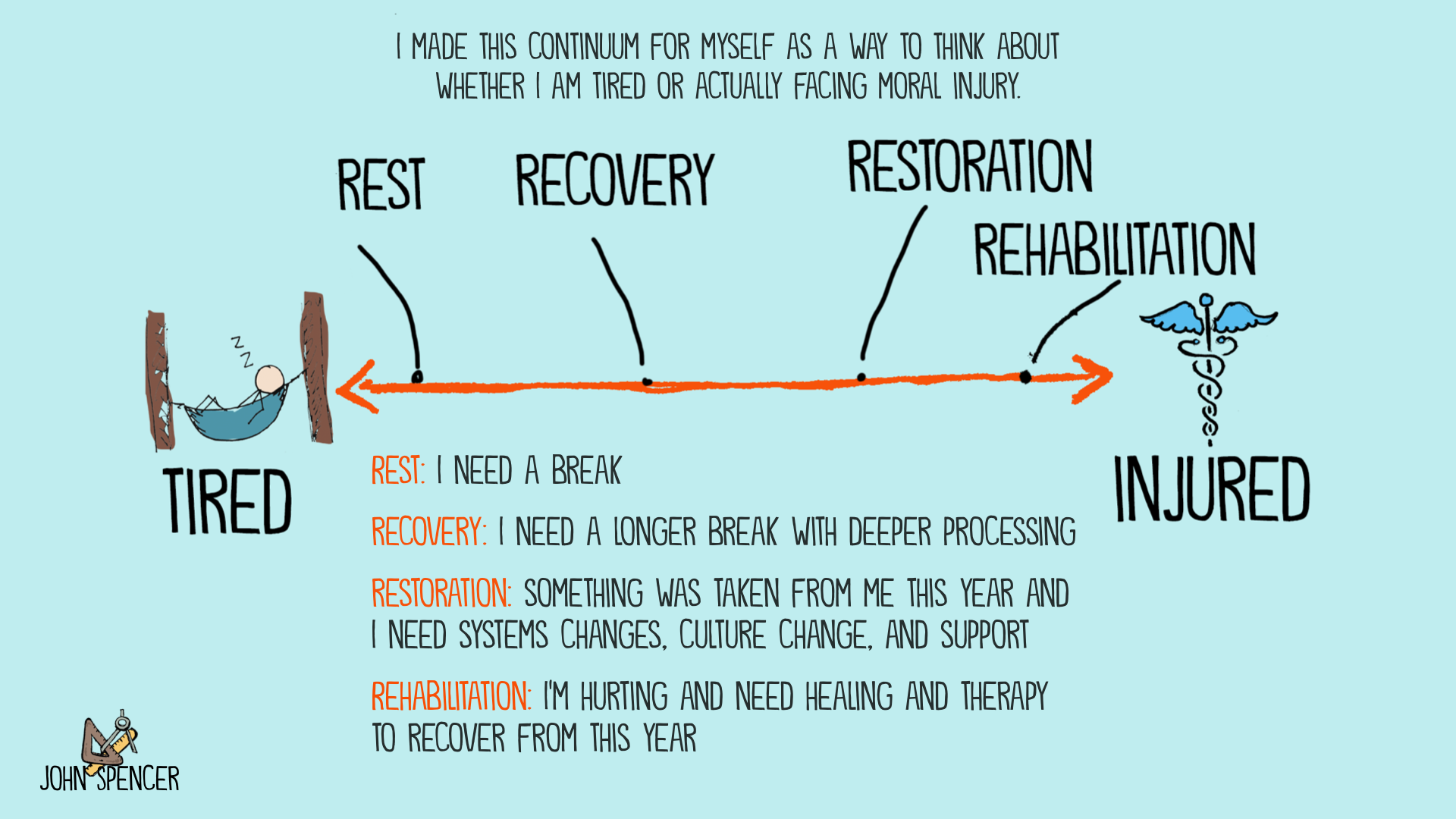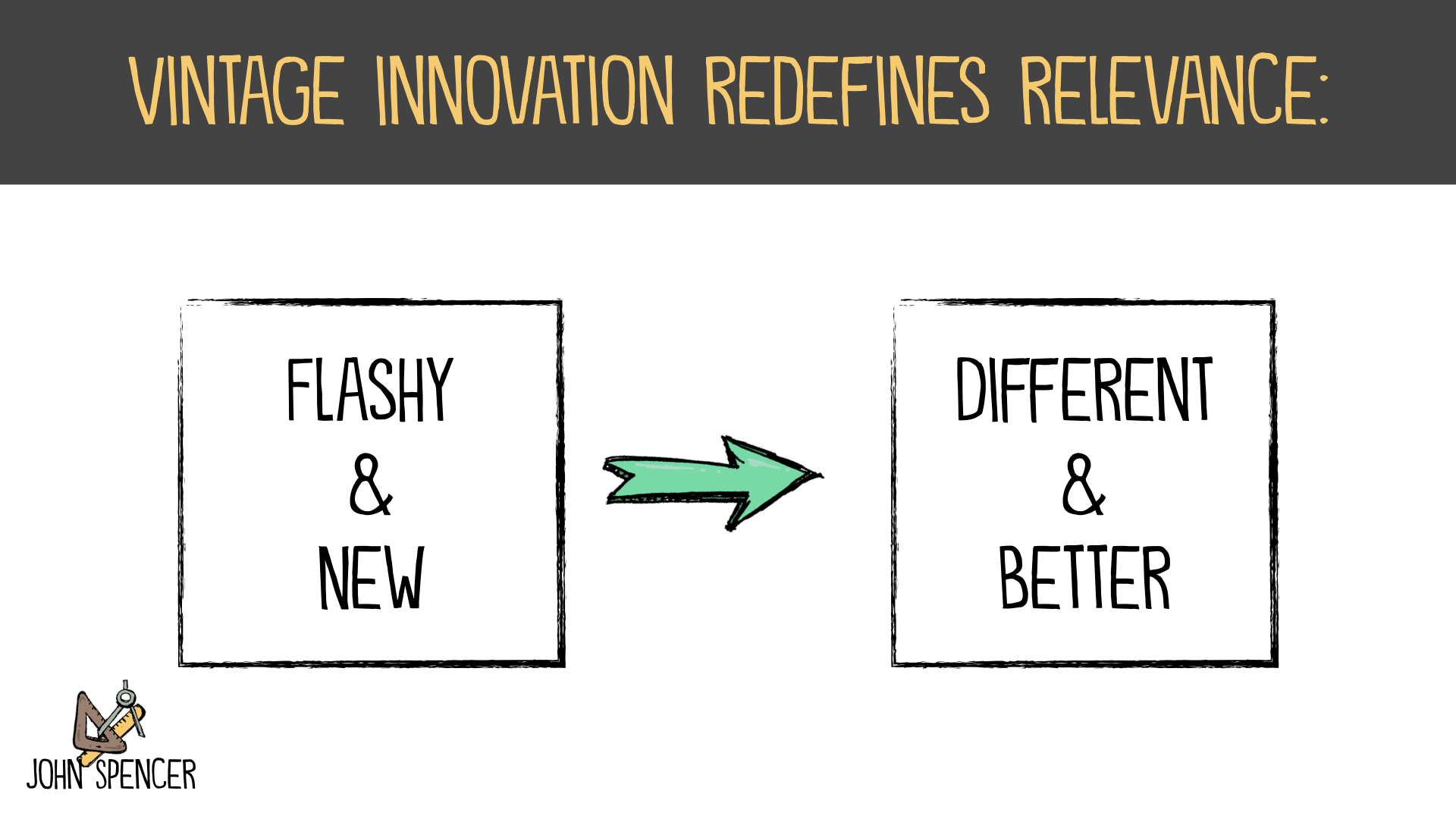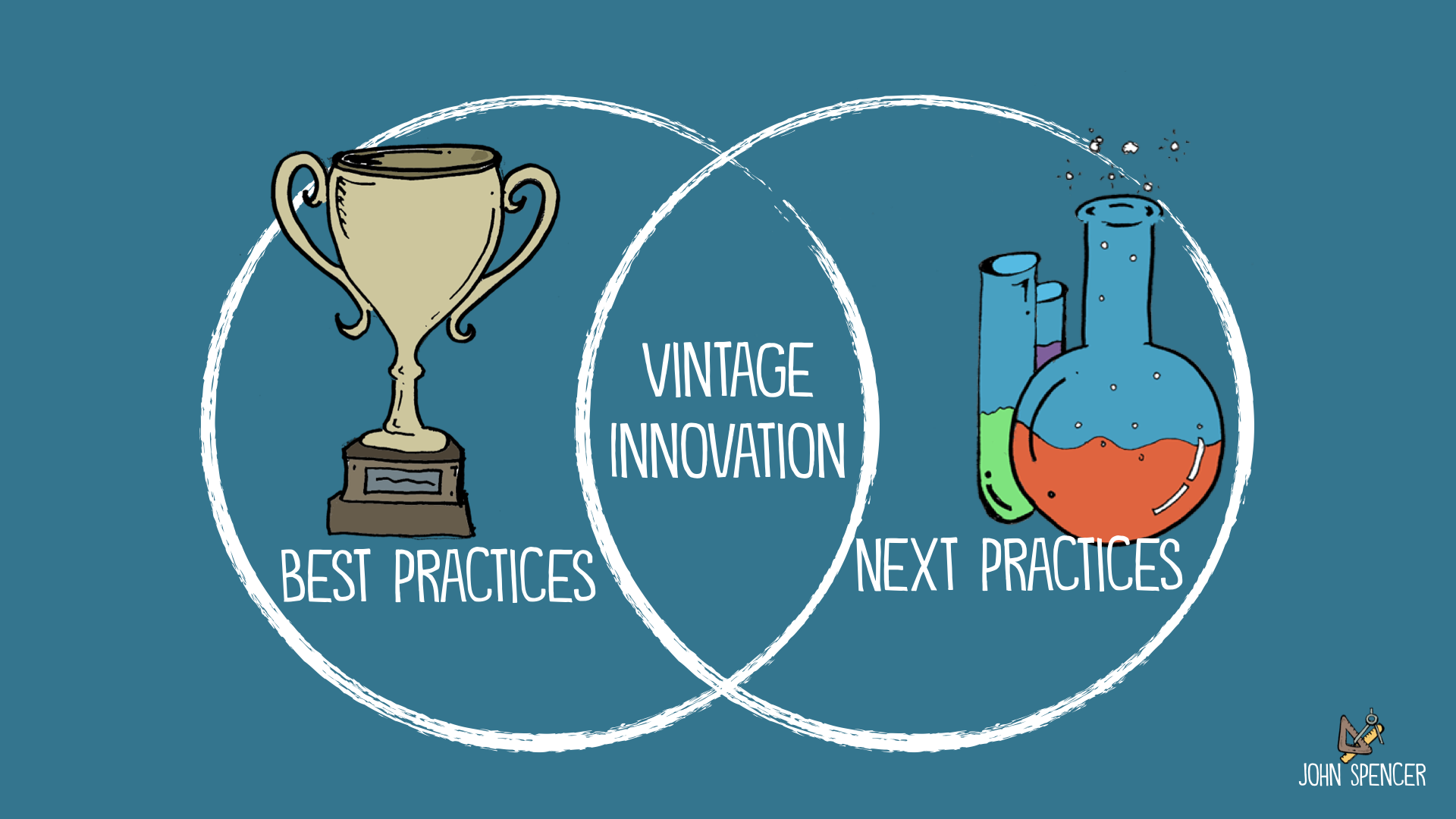What will we take away from this year?
Education Rethink 2021-06-24
Nothing about this evening fit the description of a dance recital. Not the parking lot or the lawn chairs or the sound of the cars whizzing past. I sat in jeans and a sweatshirt, eating a slice of pizza off a thin paper plate as my kids told stories and cracked jokes. The show was supposed to start at 8:30 but we were still a solid half hour until it would be dark enough to watch the prerecorded video.
I had low expectations of the video. Don’t get me wrong. I would be proud of my daughter and the hard work she had put in for the last six months. But I had watched recordings of recitals and they always lacked the emotional intensity of a live theater. There was no way that this could match the energy of watching my daughter dance at the historic Elsinore Theater surrounded by a live audience.
Eventually, they began the program. Each dancer received an award. I know there are folks out there who rail against the “everybody gets a trophy” generation but honestly, if there’s a year where everyone deserves a trophy, it’s this year. We all should get a trophy. Every one of us.
 As the sky grew darker, I braced against the cold breeze. The head of the studio turned on the projector and immediately, I was mesmerized. The multiple cameras captured the minimalist studio with its stark lighting and stripped down set. The required social distance pushed the choreography in a new direction. The use of masks seemed to emphasize each dancer’s eyes rather than limiting their facial expressions.
As the sky grew darker, I braced against the cold breeze. The head of the studio turned on the projector and immediately, I was mesmerized. The multiple cameras captured the minimalist studio with its stark lighting and stripped down set. The required social distance pushed the choreography in a new direction. The use of masks seemed to emphasize each dancer’s eyes rather than limiting their facial expressions.
Powerful themes emerged of isolation and suffering and hope and community – each one told beautifully with movement and music. My eyes got a little watery when I saw a close up of my daughter. I could see the determination and hard work and sheer joy she experiences in dancing. Ballet has been a bright spot in a challenging year.
This video recital exceeded my expectations. I had imagined a single camera recording a socially distanced group of dancers in a smaller studio. I assumed it would look like watching a video recording of a dress rehearsal. In other words, I focused entirely on what they could not do: use a stage, be physically close, dance live, etc. I focused on how they would translate a live performance to video. However, they focused on how they would transform the whole concept of a recital by emphasizing what video does well: multiple angles, close-ups, capturing facial expressions.
In other words, the limitations led to creative constraints, which in turn led to innovation. This is the idea of thinking inside the box:
This doesn’t diminish how hard this year has been. The trauma and suffering have been immense. But there is also another reality that this has been a year of innovation borne of necessity. It has me thinking about the complex and nuanced realities of this year.
Listen to the Podcast
If you enjoy this blog but you’d like to listen to it on the go, just click on the audio below or subscribe via Apple Podcasts (ideal for iOS users) or Google Play and Stitcher (ideal for Android users).
https://spencerauthor.com/wp-content/uploads/2021/06/Take-With-Us.mp3
What will we take with us from this year?
There are a few realities that we are all experiencing.
Reality #1: The trauma is real.
Teachers are tired right now but part of what we are experiencing is something deeper. This year has been traumatic. Some have lost loved ones to COVID-19. Others have faced health issues or financial hardships. Everyone has experienced the psychological effects of social isolation but it has hit certain people harder than others.
We have also experienced varying levels of secondary trauma as we work with students, staff, and families who have lost their jobs or their homes during this pandemic. Teachers have often been the ones sitting with students as they grieve the loss of a grandparent that they will never see again. They’ve heard the stories of abuse that certain students experienced when life became chaotic.
On a more basic, day-to-day level, teachers have faced constant challenges. It’s been frustrating to hop onto a Zoom call only to speak into the black void of turned-off cameras and muted microphones. It has felt overwhelming to teach in a hybrid class with half the students at home and other other half in the room. Teachers have worked extra hard at building relationships and checking in with students only to have low attendance and even lower work completion rates. They’ve faced a barrage of emails from concerned parents and guardians all while telling students 75 times a class period to pull up their masks.
Instructional coaches and school administrators have had similar experiences – from increasing discipline issues to frustrated teachers to demanding parents. They’ve had to navigate the ever-changing policies and mandates on an ongoing basis; all while feeling like they aren’t doing enough.
This has been a hard year. Teachers are feeling exhausted. The typical “teacher tired” of late May or early June hit hard back in February. This year has been a marathon. However, at the end of this marathon, there are different levels of tired. Some people are simply exhausted. They have crossed the finish line and they are placing their hands over their head with a mix of gratitude that it’s over and a sense of pride over facing a huge challenge. These teachers are worn out and need rest. Other teachers are injured. These teachers have finished the marathon but they’re hurting. Some have been traumatized. These teachers need more than just rest. They need healing. If you are in this place, please consider seeing a counselor and getting professional help.
Years ago, I made this continuum for myself to think through whether I’m tired or actually injured.
 Here’s how it works:
Here’s how it works:
- Rest: I need a break but I’m also ready to learn
- Recovery: I need a longer break with deeper processing
- Restoration: something was taken from me this year and I need systems changes, culture change, and support
- Rehabilitation: I’m hurting and need healing and therapy to recover from this year
Reality #2: It’s okay to want normalcy again.
A good friend of mine, Alex, said, “I don’t ever want to hear the word ‘pivot’ again. Like ever.” She is a phenomenal, innovative teacher. She is constantly experimenting and trying new things. However, she quickly grew tired of the constantly changing policies and expectations. Virtual learning followed by hybrid and then back to virtual and then a new synchronous/asynchronous hybrid and then virtual and then fully in-person but with masks and six feet of distance and no recess.
She experienced change fatigue because of the shifting policies, initiatives, and decisions that seemed to stream by on a weekly, if not daily, basis. She experienced the mix of apathy, passive resignation, and anger that often occurs in organizational change fatigue, where each new mandate seems to be random and unfocused. Alex doesn’t blame her school leadership. She recognizes that these changes are a complicated mix of district-level and state-level policies.
Alex is ready to return to normal. After feeling alone and isolated in a hybrid environment, she has found community again in co-planning with her colleagues. But even so, she is still yearning for the meaningful, face-to-face Socratic Seminars and hands-on maker projects. She’s ready to greet students at the door with a smile and a fist bump. On a deeply personal level, she wants to feel like an expert again. For her, the last year has been chaotic and she is ready to lean into the expertise and wisdom she has gained in over twenty years of teaching fifth grade.
It’s okay to embrace the return to normalcy. There’s nothing wrong with saying, “I miss what I had. I’m feeling a sense of loss and I can’t wait until I can do the things I used to do.” The truth is great things are happening every day in schools. We don’t have to change everything. We should be celebrating this reality:
However, there is another reality at work. Teachers will also be returning to a new context with new challenges. The 2021-2022 school year will not be like 2018-2019. For this reason, teachers should be front and center in defining what the new normal will look like.
Reality #3: We can redefine the new normal
One of the most common things I heard this year was, “I feel like I’m a new teacher all over again.” Most of us experienced some level of disequilibrium and disorientation. However, the truth is we are new teachers because we have gained new skills and discovered new practices.
For some, the learning curve was largely technology focused. They found new ways to leverage the connective and creative capacity of technology. Their students engaged in meaningful projects using shared documents and video conferencing for collaboration and tools like Trello for project management. They started with the question, “What does anytime/anywhere learning look like?” and re-imagined aspects of the curriculum.
For other teachers, the learning curve had more to do with social-emotional learning and the need to address soft skill development. They were already experts in blended and virtual learning but this year was a chance to focus on SEL. Still others began to explore trauma-sensitive and trauma-informed pedagogy. For others, the pandemic brought to light systemic injustices and these teachers will be exploring how to make learning more just and equitable through a lens of Critical Race Theory or through making learning more culturally responsive.
We have all experienced a significant learning curve this year and this process has been different for every teacher. If we think of the hero’s journey, teachers have gone through an epic experience, and they are returning with new skills, mindsets, and understandings. We will have the opportunity to re-imagine and re-design the learning for our students.
How do we move forward?
It’s important that teachers feel the permission to embrace normalcy. I’ve heard people say things like, “It would be a shame if we go through the pandemic and fail to use this as a chance to transform education.” Actually, not everything needs to be transformed. There are some great strategies that are timeless and vintage. We don’t need to blow up the system and invent something new.
In doing so, we run the risk of futurism, where we push toward the latest and greatest only to find that we’ve mistaken novelty for innovation. When we rush toward the next best thing we run the risk of accepting every new fad rather than focusing on sustainable change. We need to remember that relevance isn’t about “flashy and new” so much as “different and better.”

At the same time, we also need to recognize that our return to normal will not be a return to two years ago. The context has changed. We have changed. We have learned all kinds of new things. This is why I want to take a vintage innovation approach. I want to find that overlap of the best practices while also experimenting with the next practices.
 There are things from this year that I want to take with me into next year:
There are things from this year that I want to take with me into next year:
- Showing students more grace: I have always had flexibility around assignment deadlines. However, this year has reminded me that we are all imperfect people in an imperfect world. It’s been a reminder to me that when something is going on with a student (either academically or dispositionally) my first impulse should be empathy. I need to ask questions and hear the whole story.
- Better UX design principles: I have been on a five-year journey of improving my course design with a focus on clarity. However, this year has been a bold reminder how I can use those same principals in our face-to-face experiences as well.
- Bringing your world into the classroom: When the pandemic began, I did a show and tell activity where students brought in an item that represented a healthy way they were coping with the quarantine. I’m now doing a show and tell activity for each course I teach. I’m also focusing on ways to connect learning to the world. During the pandemic, pretty much everyone became comfortable with video conferencing. It is now easier than ever to have a Zoom meeting with an expert. This is why I want to think strategically about how to connect my students to the larger world and take learning outside the physical confines of the classroom.
- Integrating technology into the curriculum: This tends to be a strength for me, but I want to have students use tools Flipgrid, Nearpod, or Jamboard for in-class discussions. I also want to expand student videos, podcasts, and blogs.
- Focusing on the things that matter most: This has been a year where we began to focus even more on relationships, on soft skills, and on prioritizing our curriculum. I want to take that same mindset into this next year.
At the same time, there are some things I’m looking forward to when I teach face-to-face again:
- Body language: I never want take body language for granted. I want to be present as a teacher and pay close attention to things like facial expressions.
- Incorporating movement: I miss physical movement with things like value lines or the four corners activity. I miss doing hands-on maker projects in a collaborative setting. When I teach in-person again, I want to pay careful attention to how often students are moving around.
- Interactive discussions: While I’m planning to use technology tools for discussion backchannels, I am excited about face-to-face discussions. I can’t wait to have students engage in Socratic Seminars or meet up with their mastermind groups.
- Goofing off: Lately, I’ve been starting our Zoom meetings with questions about what tv shows we are watching or what music we’ve discovered. I realized that we are missing out on the informal community building that happens before and after class. My hope is that when we move back to face-to-face teaching, I will fully embrace these “in between” moments when we goof off, tells stories, and laugh together.
My hope is that I can find that overlap between the best practices and next practices. I want to celebrate the normal and never take for granted the power of physical presence, body language, and facial expressions. But I also want to innovate in my practice and continue to try new things. I want to return to normal but I also want to redefine the new normal.
Looking for more? Check this out.
Join my email list and get the weekly tips, tools, and insights all geared toward making innovation a reality in your classroom.
Success! Now check your email to confirm your subscription.
There was an error submitting your subscription. Please try again.
The post What will we take away from this year? appeared first on John Spencer.